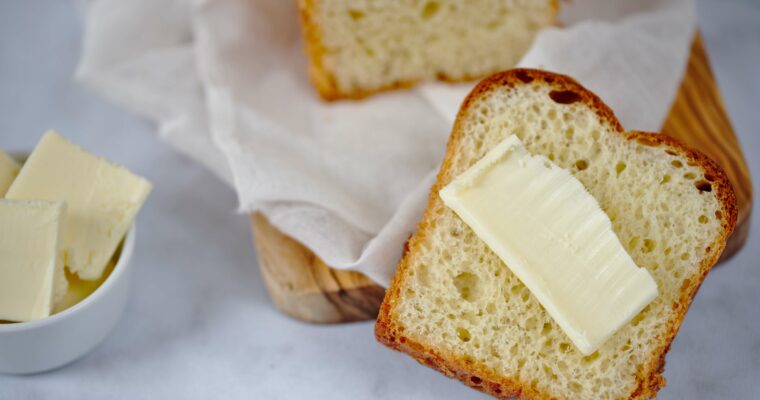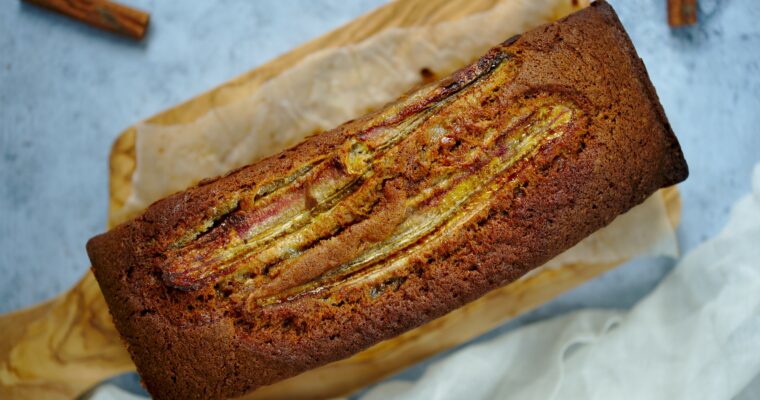My worst nightmare is becoming gluten intolerant because I love bread. And pasta. And…well anything made out of flour. If dinner was a baguette and some left over cheese, you will get no complaint from me. Seriously. You have no idea how many slices of this focaccia I ate during the photo shoot for this recipe. I almost had to make another loaf…
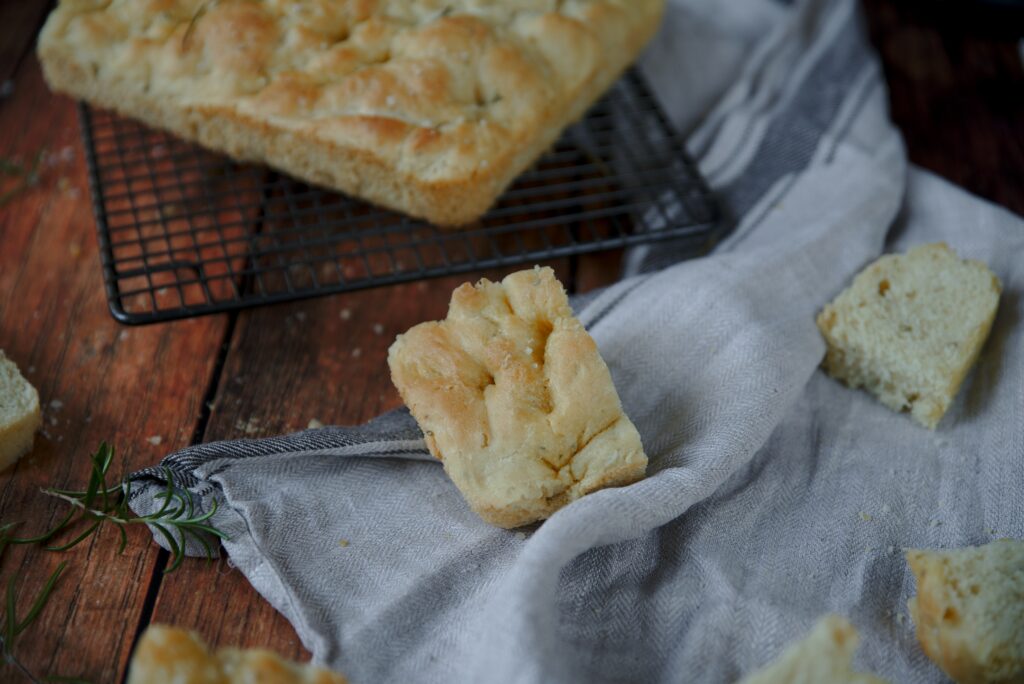
The best thing about focaccia is it’s so easy to dress it up however you want? Don’t like rosemary? No problem! Add thyme or sage to the dough and it’ll be just as good? Want to add some toppings? Go for it! Occasionally I’ll top it with sun dried tomatoes and olives. Like thinner focaccia? Use a bigger pan and roll it out more!
What is focaccia?
Focaccia is a flat Italian bread, traditionally baked on the hearth. Evidence of focaccia dates back to ancient Rome and some believe that it is from the Etruscans. Now days, the type of focaccia varies depending on the region of Italy. Some are paper thin and remind me a lot of matzo while others are a lot thicker and resembles a topping-less pizza.
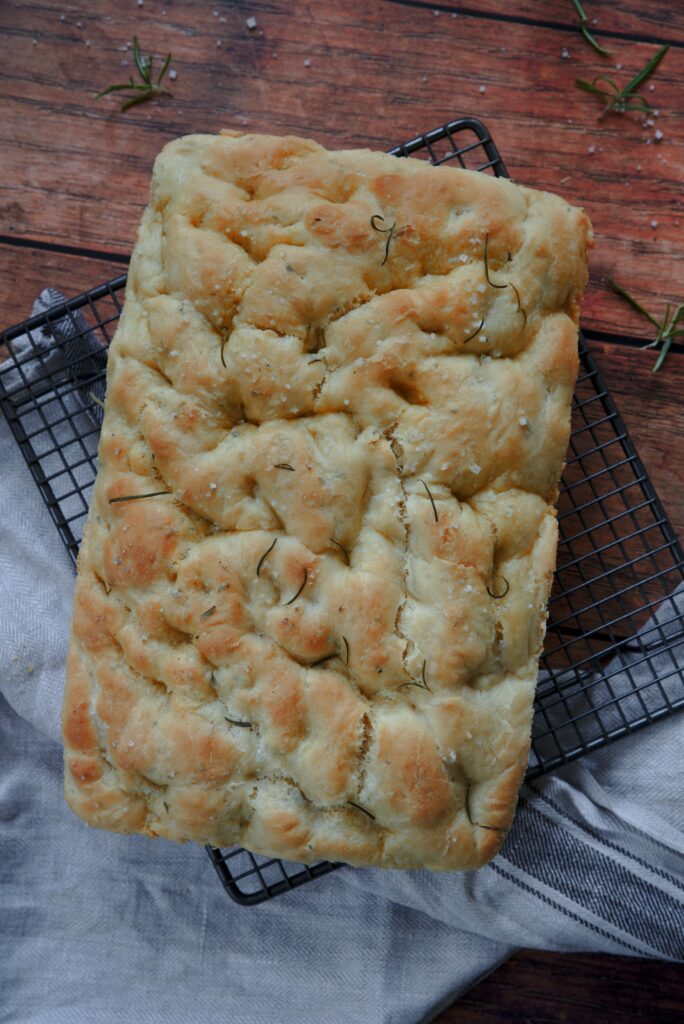
What kind of yeast do I use?
Most recipes call for active dry yeast, as that is what a lot of home cooks have in their kitchen. I generally use fresh bakers yeast, since I always have some in the fridge and fresh bakers yeast is known for adding additional flavors. I have used active dry in the past. Just be sure to use the correct equivalents with each different type of yeast.
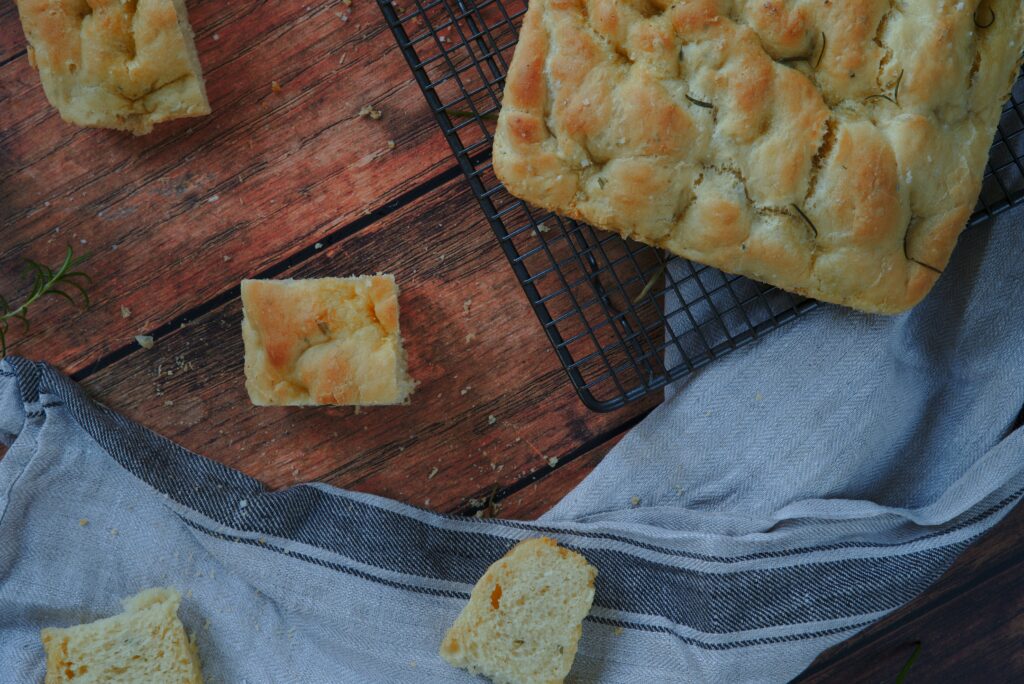
What do I serve it with?
Anything! In Italy, you can order focaccia as an type of appetizer where they’ll serve it with charcuterie. You may also find it being used as bread in a sandwich. It is always my bread of choice when we make lasagna or gnocchi pomodoro at home as it makes an excellent sauce scooper. To be honest, I probably should make it more as it is so damn tasty.
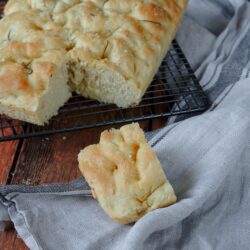
Rosemary Foccacia
Ingredients
- 320 ml water, warm
- 60 ml olive oil, extra virgin
- 20 g fresh yeast, or 7g active dry yeast
- 450 g all-purpose flour
- 2 tsp granulated sugar
- 2 tsp sea salt
- 1 tbsp chopped rosemary, plus more for topping
Instructions
- In the bowl of a stand mixer, equipped with dough hook, crumble the fresh yeast into the water and olive oil.
- Cover completely with the flour, then add the salt and sugar to opposite sides of the bowl.
- Start mixing on low, until the dough comes together. Add the chopped rosemary, then continue to mix on medium low for 5 minutes.
- If the dough does not pull away from the sides of the bowl, add a bit more flour. Do not add too much, or your end result will be much dryer and a bit dense.
- On a lightly floured work top, pull the dough out and shape it into a ball. If it's still a bit sticky, you can rub some olive oil on your hands.
- Transfer the dough to a large bowl greased with olive oil. Cover and place in a warm spot.
- Let rise for 2 hours or until doubled in volume.
- Brush the baking pan with olive oil and transfer the dough to the pan.
- Using your hands, gently spread the dough out, pushing it into the corners of the pan.
- Wet your hands with water and create the wholes in the dough with your three middle fingers.
- Cover and let rise for an additional 20 minutes.
- Preheat oven to 200°C (390°F)
- Once the second rise is finished, drizzle a bit more olive oil then sprinkle a bit of sea salt on top of the bread. You can also sprinkle some fresh rosemary on top as well.
- Bake for 20 minutes or until slightly golden on the top. Let cool in the pan, then transfer to a cooling rack to finish cooling.
- If making in advance, wrap in aluminum foil and reheat at 180°C (350°F) for about 10 minutes or until warm.

